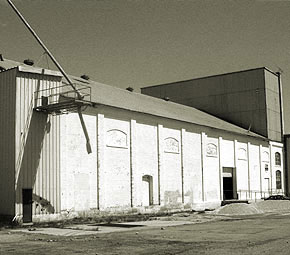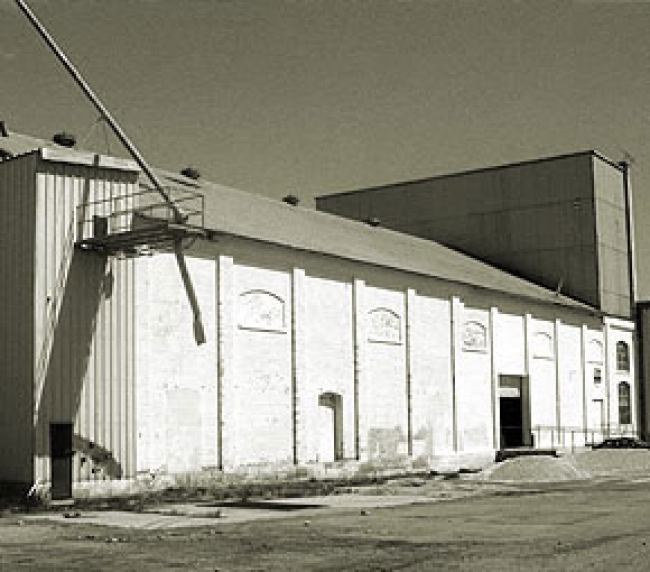Preservation Issues
 Three historic structures remain on the site from the sugar-processing era and are reflective of the type of warehouse structures that were built in the early 20th century. However, the most visible element of the complex is the two historic concrete silos that are 200 feet tall and 25 feet in diameter. These strikingly massive structures were originally used for sugar storage and can be seen from miles away. Two of the three warehouses are constructed of brick and concrete with an interior steel frame skeleton and a steel roof truss support system. The third warehouse also has a steel skeleton and roof truss system, however it is sheathed with corrugated sheet metal that is currently in poor condition.
Three historic structures remain on the site from the sugar-processing era and are reflective of the type of warehouse structures that were built in the early 20th century. However, the most visible element of the complex is the two historic concrete silos that are 200 feet tall and 25 feet in diameter. These strikingly massive structures were originally used for sugar storage and can be seen from miles away. Two of the three warehouses are constructed of brick and concrete with an interior steel frame skeleton and a steel roof truss support system. The third warehouse also has a steel skeleton and roof truss system, however it is sheathed with corrugated sheet metal that is currently in poor condition.
Utah Heritage Foundation was invited to be involved after April 2003 when we presented how transit-oriented development can work with historic preservation at our Business Leader's Breakfast. West Jordan's planned TRAX stop is nearby the sugar factory and when Rep. Steven Mascaro and Mayor Bryan Holladay discussed how TRAX and West Jordan park master planning could help revitalize the sugar factory, they called UHF.
A committee of residents was formed as the Sugar Factory Committee and has been meeting for several years to discuss what reuse options might exist for the complex. The committee analyzed past studies and conducted new structural engineering studies. These studies have concluded that all the buildings require seismic upgrading when rehabilitated. The silos are extremely stable because of their massive size and weight and could also be reused. In addition, an architectural and adaptive use study was conducted in 2004-2005 to determine the most appropriate uses for the buildings and the site. The conclusion of the study determined that there was a high demand for arts and cultural space in West Jordan and on the west side of the Salt Lake Valley for small organizations. Therefore, an arts campus at the sugar factory became the targeted approach favored by Mayor Dave Newton, the City Council, and the Sugar Factory Committee.
Over the next year, the Sugar Factory Committee and West Jordan City is looking to take a couple big steps. One is listing the site in the National Register of Historic Places. This would bring honor to a site that is truly part of the history in West Jordan and one of few historic buildings in the community. A second is to begin fundraising for Phase I of rehabilitation.
History
It was back in 1852 when Brigham Young decided it was important that pioneers develop their own methods to obtain sugar since that was the most expensive provision that was purchased from out of state. Extraction was finally perfected in 1891 and before it's close 55 years later, the factory would produce 11 million 100-pound bags of sugar.
Between 1916 and 1971, the West Jordan sugar factory was the heart of the western Salt Lake valley's economy. The processing of sugar beets was an industry that was the center of life for many families from all over the valley during this time. The sugar factory site is adjacent to a set of railroad tracks in the West Jordan Park that hope to be part of the planned Mid-Jordan TRAX line, and is set back from Redwood Road and south of 7800 South.

